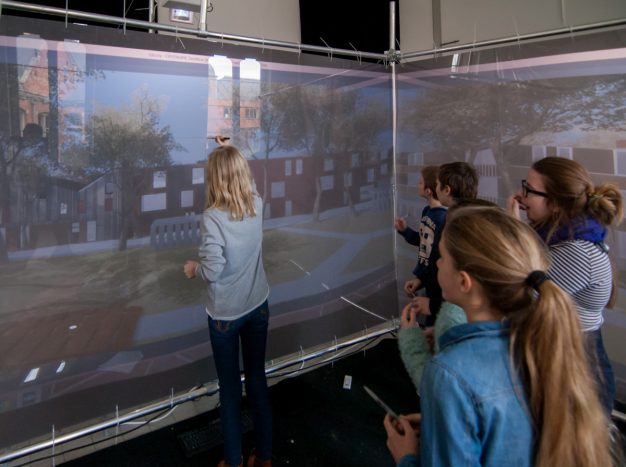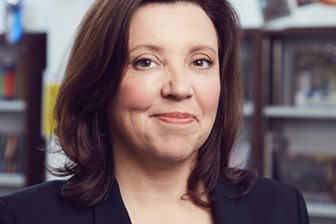
The ‘3D Cave’ – Involving teenagers in planning and design
Many child friendly city initiatives focus on the age group of 6 – 12, thereby disregarding the particular views on the urban environment of teenagers. In fact, they are often regarded as a tough audience to attract in urban planning and design processes. The interdisciplinary research team at University College Ghent (Belgium) has developed a digital interactive tool, based on a 3D game engine, to experiment with urban planning and design.
The context for the development of this tool was the question what ‘the 21st century child and youth friendly eco-neighbourhood’ could look like. The city of Ghent was planning such a new neighbourhood as part of its child friendly programme. We found it interesting to find an attractive methodology to understand teenagers’ views on this question, and to let them experiment with design.
From 2D to 3D
The 3D C.A.V.E. (cave automatic virtual environment) is a video installation that consists of 180° rear-projection screens. Part of the existing city of Ghent is simulated in 3D virtual reality, and different alternative designs can be compared. Participants can interact with the environment, using a game controller. Compared to traditional 2D designs or static models, the 3D designs allow more details, can easily be adjusted during a participation session (e.g. altering virtual weather condition or daylight) and create a more direct experience with the design.
The starting question during the participation workshop is: ‘What should teenagers and other people be able to do in this neighbourhood?’ Based on the answers to this question, different designs can then be explored and selected. And as a final step, the selected design is explored in more detail, and suggestions for change are simulated in the design. One interesting observation during the workshop was that teenagers’ attention seemed to grow during the process, whereas often the opposite is the case in workshops. This could partly be because the gaming environment is a language that is familiar to many of them, and partly because this type of workshop includes more variety for participants.
Intergenerational possibilities
Although we have developed the workshop for teenagers, the format lends itself well to application with other age groups. Virtual reality can create a safe environment within which to bring together opposing groups around a design question, and to discuss the consequences of their suggestions. The cave can also be a comfortable setting for intergenerational discussions about the city or the neighbourhood. Besides the sessions with teenagers, we also organised a few demo sessions with youth and educational workers, city administrators, social workers, landscape architects, teachers and designers. This stimulated interesting discussions about how to strengthen the position of children and teenagers within the planning process.
Author: Sven De Visscher
Photo Credit: Griet Verschelden




